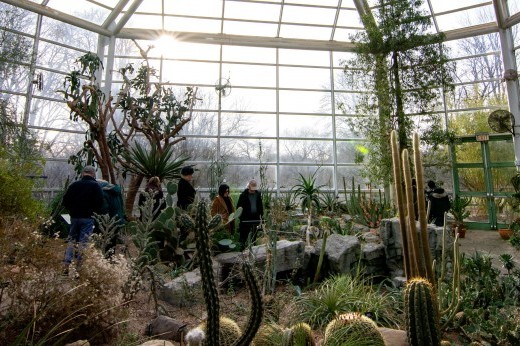Last year, Brooklyn Botanic Garden created a simple simulation to show how two proposed 39-story buildings would cast shadows over its conservatories, greenhouses, and nurseries.
This animation shows two shadow scenarios. The first simulates how neighboring buildings currently cast their shadows on the conservatories, greenhouses, and nurseries. The second simulates how this would change if the proposed rezoning and development were allowed. Both animations show the same day in June, from dawn until midday, with each frame showing one minute in time, looking northwest from the same standpoint.
June 21 is the longest day of the year and one of four days used by the Department of City Planning as a starting point for shadow impact studies. This would actually not be the day most affected by the towers, though. As shadow length and angle change from summer to winter, each greenhouse zone would lose sunlight for different durations as the shadows pass over them. Early estimates put the amount of sunlight lost at 1.5 to more than 4 hours per day, depending on the greenhouse and the season. The heaviest losses occur during spring, summer, and fall, when plants need the most sunlight, but the proposed development would impact the Garden every day of the year.
Simulations like this help all of us understand and measure that impact. It’s difficult to imagine the scale of such large buildings so close to the Garden, and their impact at different times and seasons. The animations were made using 3-D mapping and modeling software. Sun angles and day lengths were calculated using the NOAA Solar Calculator.
The proposed buildings were modeled using the developers’ own plans, as filed with the City in their rezoning request. Existing buildings and the landscape are based on NYC Open Data and NYC Department of Buildings filings.
Even though this is a relatively simplistic simulation, it shows the significant loss of light this development would cause. This is why we requested the Department of City Planning insist the developers simulate all the environmental impacts (shade, glare, and wind flow) using more detailed data and methods than the current planning code requires.Brooklyn Botanic Garden believes that a more detailed simulation would show an even greater impact.
The Department of City Planning could certify the project as early as this month—certification would start the official review process. The Garden opposes changes to zoning restrictions that would allow towers of this height to be built on that sight. Join the Fight for Sunlight campaign to get involved through community activism.



